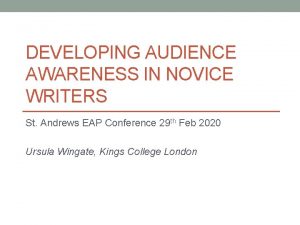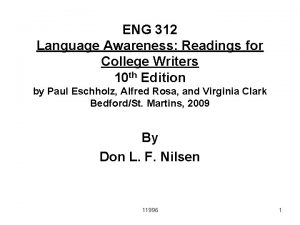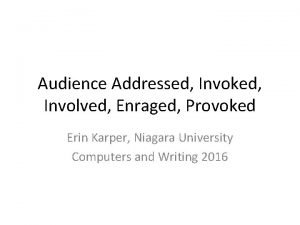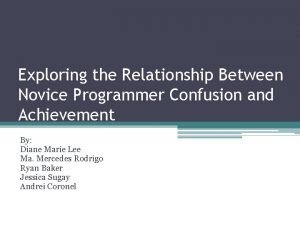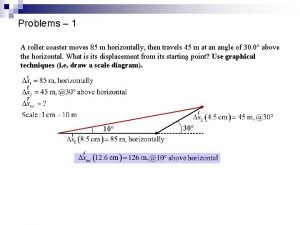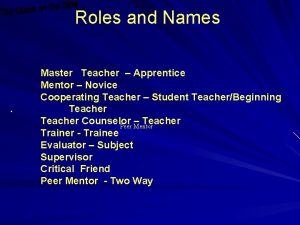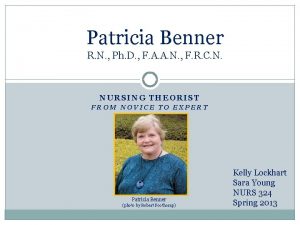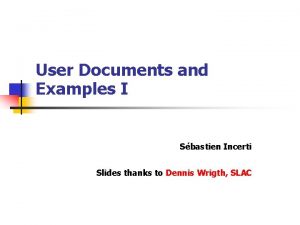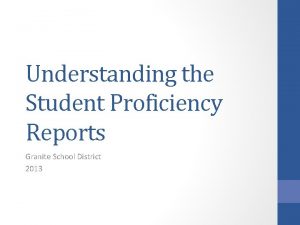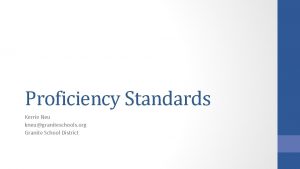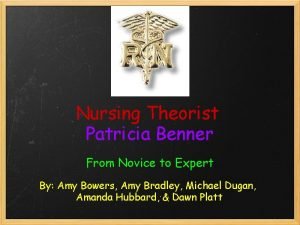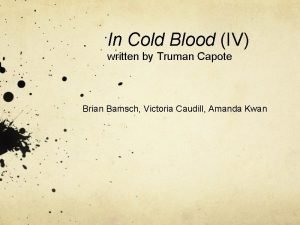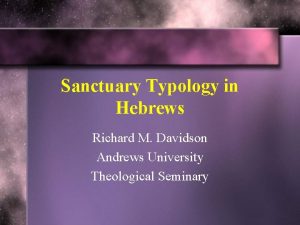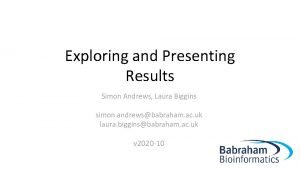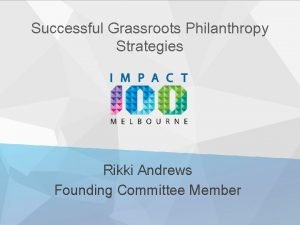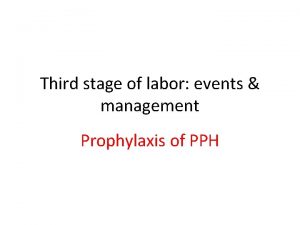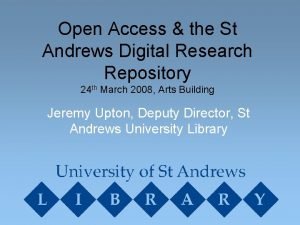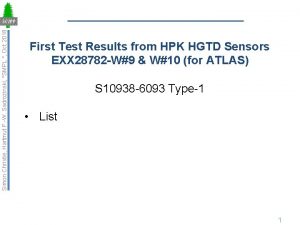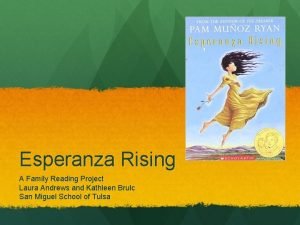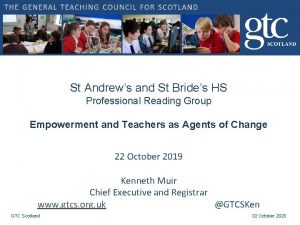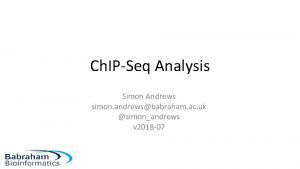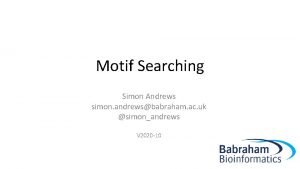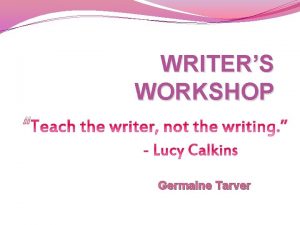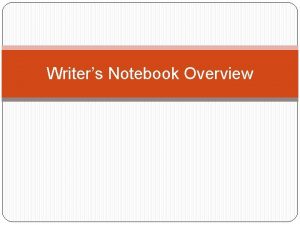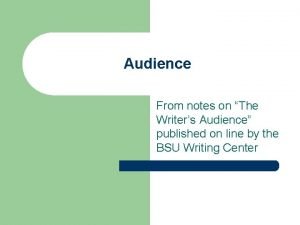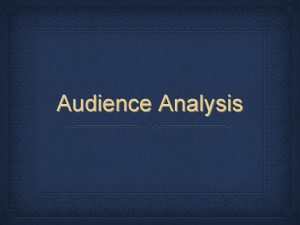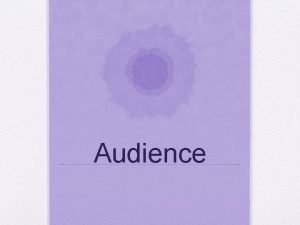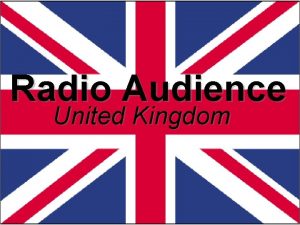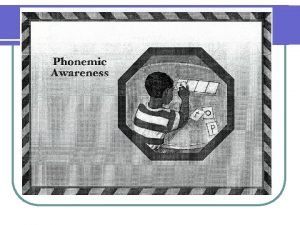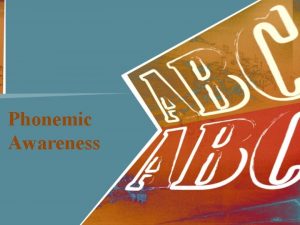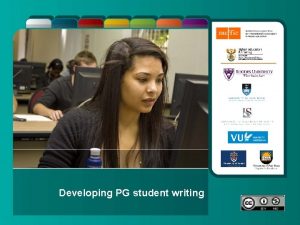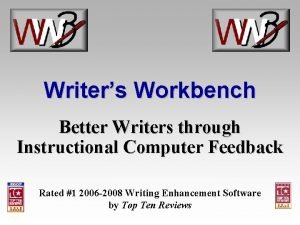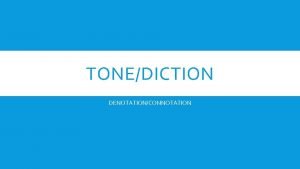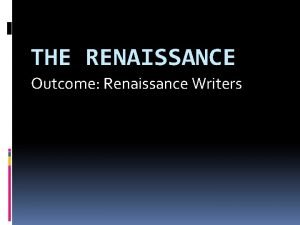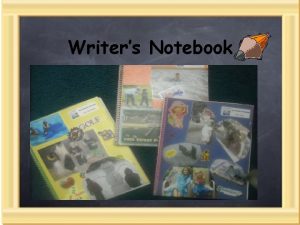DEVELOPING AUDIENCE AWARENESS IN NOVICE WRITERS St Andrews




![II. The role of metadiscourse in addressing audiences Metadiscourse: ‘[K]ey indicator of author presence II. The role of metadiscourse in addressing audiences Metadiscourse: ‘[K]ey indicator of author presence](https://slidetodoc.com/presentation_image/5f8d1828d8c35ca510581dd18733dc4d/image-5.jpg)
























- Slides: 29

DEVELOPING AUDIENCE AWARENESS IN NOVICE WRITERS St. Andrews EAP Conference 29 th Feb 2020 Ursula Wingate, Kings College London

Content What does ‘addressing audiences’ mean in academic writing? II. The role of metadiscourse in addressing audiences III. What is difficult for novice writers in addressing audiences? IV. Tasks for developing audience awareness in novice writers I.

I. What does ‘addressing audiences’ mean in academic writing? • Proficient writers: ‘attempt to second-guess the kind of information that readers might want or expect to find at each point in the unfolding text, and proceed by anticipating their questions about, or reactions to, what is written’ (Thompson 2001: 58). • In successful academic texts, writers use various linguistic features to ‘shape their texts to the expectations of their audiences’ (Hyland 2001: 549).

Who is the audience? Reader(s) Discourse community Writers must show competence as members by • Signalling understanding of community’s values, assumptions and practices • Referring to shared knowledge (intertextuality) • Demonstrating ‘discoursal alignment’ (Lancaster 2016) • Positioning themselves = presenting own stance in ‘a larger discourse already in progress’ (Hyland 2001: 551)
![II The role of metadiscourse in addressing audiences Metadiscourse Key indicator of author presence II. The role of metadiscourse in addressing audiences Metadiscourse: ‘[K]ey indicator of author presence](https://slidetodoc.com/presentation_image/5f8d1828d8c35ca510581dd18733dc4d/image-5.jpg)
II. The role of metadiscourse in addressing audiences Metadiscourse: ‘[K]ey indicator of author presence in the text and author’s positioning within the academic community’ (Li & Wharton 2012) Metadiscourse: Textual features ‘which explicitly organise the discourse, engage the audience and signal the writer’s attitude’ (Hyland 1998: 437)

Interpersonal model of metadiscourse 1. Interactive resources: ‘Organising the discourse’ signalling, signposting, crossreferencing, connecting ideas 2. Interactional resources: i. ‘Engaging the audience’ ENGAGEMENT: recognising presence of readers, acknowledging their anticipated reaction, focusing their attention… ii. ‘Signalling the writer’s attitude’ STANCE: positioning towards propositions and the reader (Hyland 2005)

Key interactional resources (Hyland 2005: 177)

Stance resources 1. Hedges: reduce epistemic commitment, expanding discursive space (perhaps, it seems, may be…, possible) 2. Boosters: increase epistemic commitment, reducing discursive space (obvious, clearly, of course) 3. Attitude markers: show writer’s judgement (useful, important, reasonable) 4. Self-mentions (I believe, in my view) 5. Disclaim markers: (however, but, it is not… but rather) Two functions: (1) problematize others’ views; (2) respond to readers’ anticipated questions or challenges (Lancaster 2016)

Stance features of successful writing 1. Contrastiveness achieved through disclaim markers signals criticality Example: ‘Even though many may view this approach as dated, it does gain influence by featuring in the media…’ 2. Critical distance achieved through hedges signals objective reasoning Example: ‘Overall, it appears reasonable to conclude that all varieties are indeed linguistically valid. 3. Discoursal alignment achieved through attitude markers and boosters signals novice membership of discourse community Example: By contrast, the idea of giving these varieties an equal official position …is seriously flawed.

III. What is difficult for novice writers in addressing audiences? 1. Identifying audience 2. Understanding genre purpose and requirements 3. Student difficulties – research findings 4. Examples of metadiscourse in student texts

1. Identifying audience Undergraduate essay prompts writers in dialogue with their teachers (Tang 2009) Examples Biology: Grazing – good or bad for Britain’s landscape? (Nesi & Gardner 2012: 99) History: Which had more influence over later Hanoverian statesmen: the crown or public opinion? Simple argumentative structure; response to teacher’s agenda (‘I strongly feel that… ‘)

2. Understanding genre purpose and requirements Argumentative essay Genre purpose: Displaying ‘powers of informed and independent reasoning’ (Nesi & Gardner 2012) Genre requirements: • Critical thinking, displayed through • Analysis and synthesis of relevant sources • Development of a position • Coherent presentation of position, reflecting the discipline’s conventions of reasoning

Misconception of genre purpose Example From a student diary: Now I’ve read all the books and I’m confused because there is much overlapping and I’m not sure what opinions are better. I am going to list all of them, because I want to show the work I’ve done’.

3. Student difficulties – research findings • Low-achieving writers use more boosters, high-achieving ones more hedges (Hinkel 2005; Aull & Lancaster 2014; Lee & Deakin 2016)* • Low-achieving writers construct ‘student stance’; high- achieving students construct ‘novice academic stance’ (Lancaster 2014) * Similar findings in comparison between NNS and NS academic writers (Römer 2009; Larsson 2016)

4. Examples of metadiscourse in student texts Argumentative essay, BA English Linguistics Essay title: If all varieties of a language are linguistically valid, should we still choose a single variety as the language to be used in education, in government, and for other official purposes? Lisa and Harry’s texts (handout)

Interactive resources: Coherence Lisa:

Interactive resources: Coherence Harry:

Interactional resources/ Stance features 1. Contrastiveness (use of disclaim markers) Lisa: ‘It seems to me that most people agree that a standard is needed however spoken Standard English is almost obsolete’. Harry: Even though many may view this view as dated, it does gain influence in the media, where language change is often condemned, perpetuating negative public views towards variety. By contrast, the idea of giving these varieties an equal official position, no matter how valid or ideal, is seriously flawed.

Interactional resources/ Stance features 2. Critical distance (use of hedges) Lisa Harry Statements Total Hedged statements Percentage occurrence 53 4 7. 5 55 22 40 Lisa: ‘It seems to me that most people agree that a standard is needed’. Harry: ‘Overall, it appears reasonable to conclude that all varieties are indeed linguistically valid.

Interactional resources/ Stance features 3. Discoursal alignment (use of attitude markers and boosters) Context of boosters and attitude markers

Context of boosters and attitude markers Lisa: ‘It is true that some prescriptivists have lost sight of…’ ‘Of course all varieties of a lnaguage are linguistically valid and it is wrong to give one form prestige’ ‘Of course standardisation of the written and the spoken form of English are dramatically different’ Harry: ‘This would be a highly expensive and time consuming process’ ‘Of course, the likely flaws of this source must be noted’ ‘For these reasons, it seems appropriate to recommend the single variety to continue to be used’

Lisa and Harry’s addressing of audience

IV. Tasks for developing audience awareness in novice writers 1. Need for comprehensive classroom discussion about a. Who is the audience for my writing? b. Who is my discourse community? c. What is the genre I am going to write, and what are the community’s expectations towards that genre? Instructor/Subject tutor (supported by EAP specialists) 2. Need for direct instruction of interactional metadiscourse (Hinkel 2004; Hyland 2005; Li & Wharton 2012) EAP specialists

Principles for direct instruction 1. Use of student texts as exemplars 2. Comparison of high- and low-achieving texts to help students to develop audience awareness, understanding of genre requirements and to acquire stance resources Examples

Task for developing audience awareness Please compare the two essay introductions. For which kind of reader were they written? What level of topic knowledge was expected from the reader?

Task for developing understanding of criticality as genre requirement Please compare these two essay extracts for their level of criticality. Which features signal criticality?

Features of criticality

Task for acquiring stance resources (hedges, boosters and attitude markers) Please analyse the two essay conclusions for expressions of certainty and caution. Also identify where the writers make evaluative judgements.

Final thoughts • Audience awareness should be developed in the subject classroom EAP specialist support (collaboration) • EAP courses should focus more on interactional metadiscourse • Student exemplars and comparison between high- and low-achieving texts are an effective teaching/learning method
 St andrews eap conference
St andrews eap conference Language awareness readings for college writers
Language awareness readings for college writers Cvs privacy awareness and hipaa training answers
Cvs privacy awareness and hipaa training answers Audience addressed audience invoked
Audience addressed audience invoked Novice programmer
Novice programmer A football player runs directly down the field for 35 m
A football player runs directly down the field for 35 m Novice apprentice
Novice apprentice Benner's model
Benner's model Novice example
Novice example Novice intermediate advanced
Novice intermediate advanced Levels of nursing novice to expert
Levels of nursing novice to expert Apic novice roadmap
Apic novice roadmap Novice intermediate advanced
Novice intermediate advanced Nurse novice to expert
Nurse novice to expert Joe james in cold blood
Joe james in cold blood Tommie lee andrews
Tommie lee andrews Richard davidson andrews university
Richard davidson andrews university Laura biggins
Laura biggins Rikki andrews
Rikki andrews Mathew duncan method of placental separation
Mathew duncan method of placental separation St andrews research repository
St andrews research repository Simon andrews christies
Simon andrews christies Saint andrews criss
Saint andrews criss Dr sarah andrews
Dr sarah andrews Esperanza rising lexile level
Esperanza rising lexile level Separadores lahey
Separadores lahey St andrews and st brides high school
St andrews and st brides high school Simon andrews babraham
Simon andrews babraham Simon andrews babraham
Simon andrews babraham Simon andrews babraham
Simon andrews babraham
